|
|
| home | exhibitions | interviews | features | profiles | webprojects | archive |
|
Ian Massey on John Milne, Barbara Hepworth and 'Queer St Ives' e-interview Rupert White
'Queer St Ives and Other Stories' is
a very sensitive and insightful book. It includes quite a few references
to your own life, which suggests that it was a very personal project,
and even that you identify quite strongly with its central figure:
sculptor John Milne. Is this true? Yes, the book is in many ways very personal, most obviously in the way it recounts my experiences of St Ives, both in the introduction and in the short final chapter. In its opening pages I write of my first ever visit to the town as a twenty year-old, on a brief family holiday in August 1976; then in the final chapter I write of events there almost forty years later. That initial visit confirmed an enduring passion for St Ives and its artists, and Iíve now lost count of the number of times Iíve returned to the place; I feel that it has entered my blood. In fact, Iíve described the book as my love letter to St Ives. As to your question about a sense of
identification with John Milne, what he and I have in common is a
working class upbringing in the northwest of England, and a shared
sexuality. Also, important for both he and I is the way that art
afforded a form of escape from the rather narrow expectations of social
class (by which I mean in terms of education and career). Having said
that, Milne, who was born in 1931, came from the same generation as my
parents, whose opportunities were as nothing compared to those of their
children. Beyond that, though I have a definite empathy with Milne as
the central figure in my book, I consider it necessary to retain a
healthy degree of authorial distance in biographical writing, something
that also applies to my earlier work on the queer artists Patrick
Procktor and Keith Vaughan.
Please can you say something about
Milne's upbringing, and particularly his relationship with his father,
which I understand was not very good. His father James was 59 years-old at the time of his sonís birth, his wife Lottie thirty-nine. They had two daughters before John, their youngest child, came along. James Milne was of Scottish extraction, and a tailor who worked from home. He was wayward and demanding, his marriage an unhappy one. In later life John said that he had hated him. Johnís mother was very different in character to her husband and cared for her son deeply. I strongly suspect that John realised that he was gay as a child and knew himself to be very different to the rest of his family, who were mystified, and probably bewildered, by his love of classical music and poetry, both of which would have been outside of their knowledge and experience.
There is a quote Iíve used in my book, that sums this up rather poignantly. Itís from a book titled 'A Minority', published in 1960, and comes from an anonymous interviewee: ĎAs a boy from a very poor home, homosexuality has been a great help to me. Not only have I met many excellent people that I couldnít have met if I had not been homosexual, but also my homosexual friends have helped to educate me. Itís been like going to university, except the university has come to me.í
Cosmo Rodewald, who was a lecturer at
the University, was one of the most important of these contacts. What
was their relationship, and how did Rodewald end up buying Trewyn
(pictured above and below), the large house in St Ives, behind what is
now the Barbara Hepworth Museum? How did this arrangement work,
financially-speaking?
Eventually Rodewald gave the house to him in a deed of gift. When Milne died intestate, the property went to his two sisters as next of kin, who subsequently sold it.
The friendship between she and Milne was at times ambivalent as you say, though there seems to have been a genuine regard and fondness between them. Of course, Hepworthís success and reputation far exceeded Milneís, a fact that naturally threw his own career and inherent insecurities into sharp relief. And yes, I believe that he did tend to seek her approval. On that front, itís worth noting that at the time of his first arrival in St Ives, as a callow twenty-one-year-old, in the winter of 1952 she was nearly fifty years of age. One might also add that many of the guests who stayed at Milneís house were in town to visit Hepworth. They were not only British, but international, and included critics and collectors, and representatives from galleries and museums. This would also have fed into Milne feeling overshadowed by her. Yet at the same time she seems to have been nurturing of him, and believed in his talent and potential. Though Milne was sometimes critical of her,
her death devastated him, and was effectively the beginning of the end;
he died little more than three years after her, in June 1978.
Another factor was Mossís friendship with Piet Mondrian, who she first met in Paris in 1929, four years before Nicholson and then Hepworth met the Dutch artist. Therefore, when Moss moved to live at Lamorna, twelve miles or so southwest of St Ives, she presented a threat to the power base you describe. Both Nicholson and Hepworth deliberately kept her at armís length, ignoring her written invitations to visit her at Lamorna, and blocking her membership of the Penwith Society.
He rented one of the Porthmeor Studios for six months, though by January decided to return to London. He certainly did disparage the place, whilst at the same time making friends there, among them Mary ĎBootsí Redgrave, wife of the sculptor William Redgrave, and the Canadian writer Norman Levine, who lived in the town for many years from the early 1950s. Shortly before Christmas 1959, Bacon wrote from St Ives to his friend the artist Denis Wirth-Miller, ĎI have really learnt my lesson this time never to move from a large town I canít wait to leave this dumpí. I suspect his frustration arose in no small part from the difficulty he had in producing work for his Marlborough Gallery show, a situation exacerbated by his young boyfriend Ron Belton, who had accompanied him to St Ives, and who created havoc in the town. And yes, Bacon did make return visits to see friends such as Levine; visits that offered some respite from the hectic social round in Soho. He also returned to visit Milne at Trewyn in 1965, this time accompanied by his boyfriend George Dyer.
Nixon, who after Milne and Hepworth is the third figure in my bookís central triumvirate, was a very obviously gay man at a time when views about homosexuality were distinctly primitive. He first visited St Ives at Easter 1958, and soon after was living at Trewyn whilst working at a restaurant on the harbour.
Iíve described Nixon as a queer Everyman.
Like many gay men of his generation, his life bridged great changes in
legal and social attitudes to homosexuality. Subjected to criminal
conviction and incarceration in his youth, he went on to live through
the eras of gay liberation, the devastation of AIDS and increased queer
visibility. He lived long enough to see the first civil partnerships
take place, just six months before he died at the age of 70 in June
2006. Tragically, Milne died when he had
just turned 47, of an overdose of barbiturates and alcohol. Although it
was not confirmed as suicide we know he had a previous history of
self-harm. Was he an unhappy man? Was St Ives itself a good or bad
influence in this regard? The root cause of Milneís mental instability is uncertain. He was a friendly and popular man, with a great sense of fun, but was unable to form lasting romantic relationships, and was often very lonely. St Ives seems to have been something of a double-edged for him. On the one hand, he was able to work there in what one might suppose were ideal surroundings, and to enjoy friendships with fellow artists working in the town (among them were Alan Lowndes, Denis Mitchell and Antony Benjamin). Yet at the same time, he found St Ives terribly remote and isolating during the winter months, when he would escape to Morocco whenever possible. But his inner sense of loneliness, and longing for enduring companionship remained no matter where he found himself. As you rightly say, the inquest that followed Milneís death concluded that he had died accidentally, whilst also stipulating that he had made several suicide attempts in the past.
Images top to bottom: John Milne photographed by Ida Kar, Trewyn, 1961. Trewyn, c. 1975. Photograph courtesy of Jessica Nicholls. Anthony Benjamin in the
sitting room at Trewyn; own display are Benjamin's painting 'Trink'
(1960, and Milne's 'Gatos' (1960). Photograph courtesy of Nancy
Patterson.
|
|
|

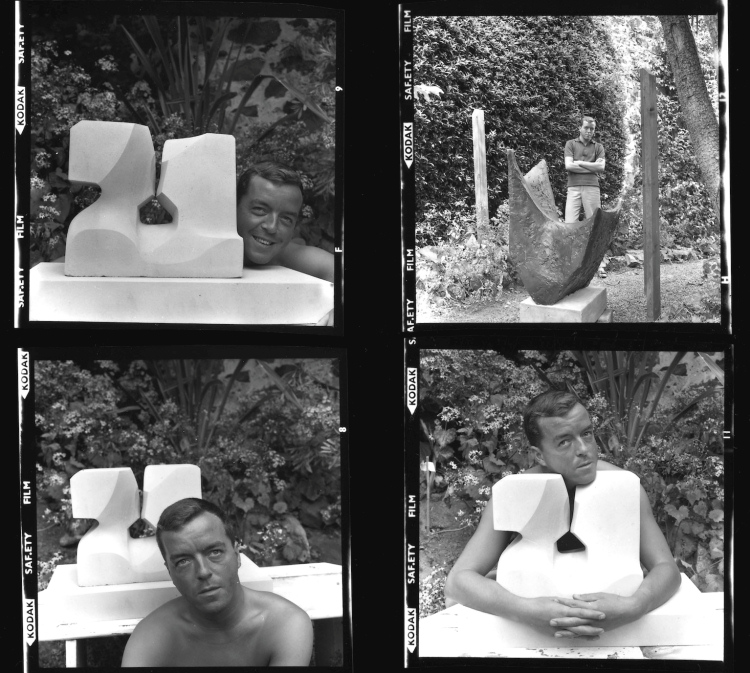
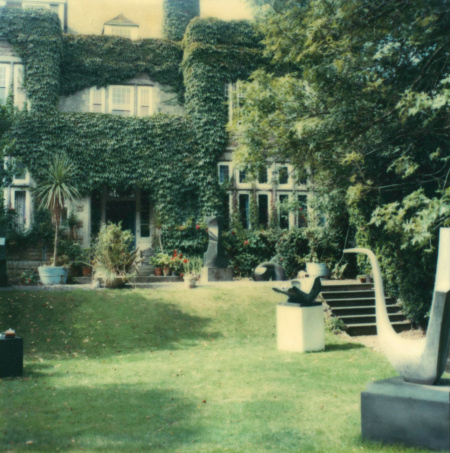 Would
you agree that being gay helped Milne escape his working class roots?
Manchester, where he grew up, seems to have its own rich cultural scene,
and Milne was able to make some useful contacts there...
Would
you agree that being gay helped Milne escape his working class roots?
Manchester, where he grew up, seems to have its own rich cultural scene,
and Milne was able to make some useful contacts there...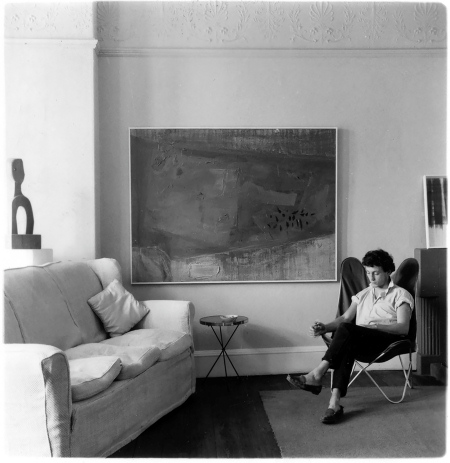 Later,
when having worked for about eighteen months as an assistant to Barbara
Hepworth, Milne decided to remain in St Ives, Rodewald bought Trewyn for
him to live in, with the idea that he would run the place as a guest
house with a view to bring in some income. Although over the years there
were many paying guests at the house, Milneís expenditure was such that
he continued to rely on Rodewald to bail him out, long after their
intimate relationship had ceased.
Later,
when having worked for about eighteen months as an assistant to Barbara
Hepworth, Milne decided to remain in St Ives, Rodewald bought Trewyn for
him to live in, with the idea that he would run the place as a guest
house with a view to bring in some income. Although over the years there
were many paying guests at the house, Milneís expenditure was such that
he continued to rely on Rodewald to bail him out, long after their
intimate relationship had ceased. 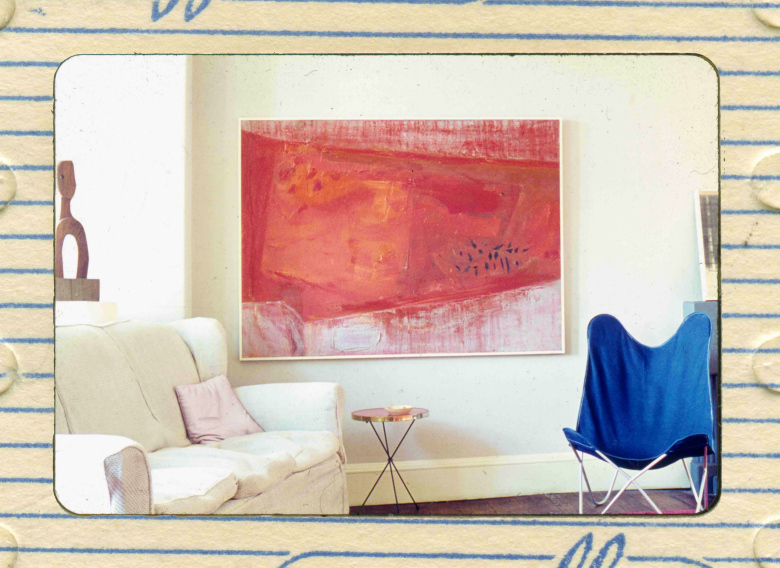
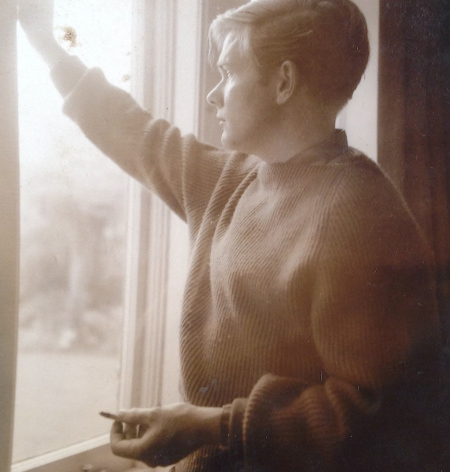 Four
years before he had been one of 15 men brought before the judge at
Taunton Assizes, all of them charged with 'gross indecency'. They were
all found guilty, and many were given prison sentences. Others,
including the eighteen-year-old Nixon, were sent to a mental hospital
for treatment; in Nixonís case for twelve months. After the judgeís
verdict at Taunton Assizes, upon being taken down from the dock to the
cells, one of those given a prison sentence took his own life by taking
cyanide that he had secreted on his person; he and Nixon had been sexual
partners. As you rightly say, the case reminds us of how conservative
society was at the time, and of how brutal legal and medical attitudes
to homosexuality were.
Four
years before he had been one of 15 men brought before the judge at
Taunton Assizes, all of them charged with 'gross indecency'. They were
all found guilty, and many were given prison sentences. Others,
including the eighteen-year-old Nixon, were sent to a mental hospital
for treatment; in Nixonís case for twelve months. After the judgeís
verdict at Taunton Assizes, upon being taken down from the dock to the
cells, one of those given a prison sentence took his own life by taking
cyanide that he had secreted on his person; he and Nixon had been sexual
partners. As you rightly say, the case reminds us of how conservative
society was at the time, and of how brutal legal and medical attitudes
to homosexuality were.